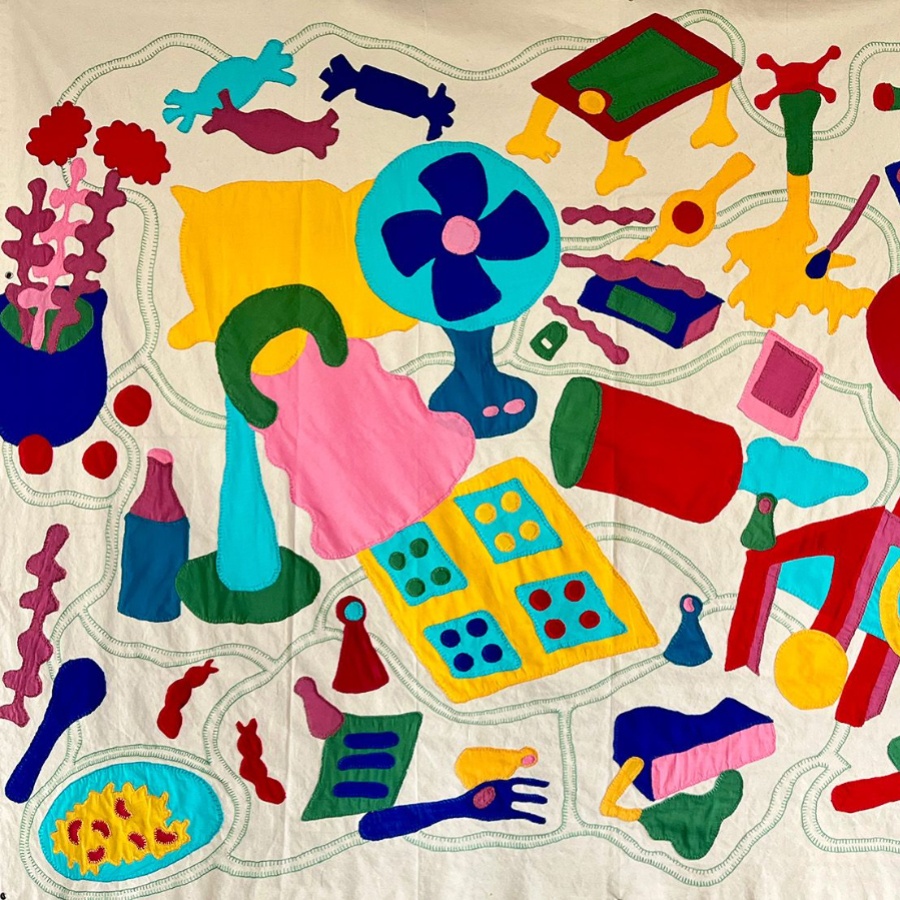Listeners of Anything Goes, a video podcast by Emma Chamberlain, are used to seeing the 23-year-old American host in her pyjamas. In many episodes, her hair’s a mess and sometimes there’s even a half-eaten bag of chips on her desk. It feels a bit like peeking into a friend’s bedroom when they’ve just rolled out of bed. Voyeuristic, yes, but also comforting, homey, and relatable.
In the early 2010s, when podcasting was still a relatively new medium, it felt like a natural transition for millennials who’d spent half their lives shuffling between radio stations and jamming pencils through cassette tapes. By the time they adapted to streaming tunes on Spotify and Apple Music, podcasts had established a niche audience of listeners, with shows such as The Joe Rogan Experience and Serial. Today, the medium has evolved, gone mainstream, and acquired a very different audience. What started as a purely aural form—a DIY medium that anyone with opinions and a microphone could play with—has now entered the video-driven ecosystem. Gen Z, it seems, prefers to watch their hosts chat their way through hours of content. In fact, reports suggest that more than half of the top 20 podcasts of 2023 are available as filmed videos.
Even the content and tone of new-age podcasts has been tweaked to suit the generation. Popular US-based podcaster Alex Cooper’s empire includes Call Her Daddy, which she hosts, plus Alix Earle’s Hot Mess, and Madeline Argy’s Pretty Lonesome, and all three shows have some things in common. Often described as raw and unfiltered, unscripted and candid, all these hosts share cathartically frank revelations even as they discuss the minutiae of their lives. Frequently addressing their audience from the comfort of their bed, this generation of podcasters comes across as so real that they create a sense of intimacy we usually reserve for late-night conversations with close family and friends.
“Gen Z no longer wants to watch something that is highly produced, because it is very overwhelming,” says Aditya Lodha, co-host of The Having Said That Show, one of India’s most popular podcasts, with more than 65k followers on YouTube. On the show, Lodha, based in Mumbai, does not break down the government budget or narrate a whodunnit. Instead, you’ll find candid conversations around awkward first dates and scandalous bedroom stories.
Similarly, for Mumbai’s Sakshi Shivdasani and Naina Bhann, creators of comedy podcast Moment of Silence, it’s less about shouting opinions from rooftops and more about whispering secrets in the dark. And their audience is here for it. “I don’t expect to take away a lot of information from these podcasts. Instead, I enjoy seeing Aryana being made the butt of all jokes or watch Jeh’s reaction to an unhinged opinion that Sid has dished out,” says 24-year-old John Zachariah, a cyber security analyst in Kochi, who’s a hooked to The Having Said That Show. For 25-year-old Jasnoor Kaur, a journalist and unabashed podcast evangelist from Delhi, informality is key. “Seeing creators host episodes in their pyjamas makes it feel less like curated content and more like a dinner-table conversation. I like tuning into these episodes when no one’s around.”
Even shows like UNTRIGGERED with AminJaz and The Desi Crime Podcast sprinkle their deep dives on crime and culture with personal anecdotes, making people feel like they’re having a cup of coffee with their friends rather than listening to a lecture.
That’s the vibe Dev Raiyani was going for, too, when he and his friends, all Mumbaikars, started Dumb Biryani. The show thrives on unscripted conversations with funny friends and occasionally, guests from Bollywood and social media (Orry was the latest). “With Dumb Biryani, we just decided to broadcast the interesting conversations we have on regular days. And our audience ended up loving these unplanned sessions.”
Kaur, an avid listener of Moment of Silence and The Having Said That Show, likes to hear these podcasts while multitasking (“the chatter keeps me company”), which tracks with Lodha’s belief that “Gen Z isn’t giving 100 per cent of their attention to anything,” and that most people “consume podcasts passively”.
It’s also an escape from the endless barrage of bad news that we are now at the receiving end of. Nisha Kumar, a 25-year-old counselling psychologist from Mumbai, says, “These shows help battle news fatigue. We are constantly bombarded with information about horrible things happening around the world, which creates a lot of anxiety and dread. But watching your favourite creators talk about the most trivial things is a welcome break.”
In his comments section, Sharan Nair, the Kochi-based co-host of This is Not a Podcast, has listeners compare his podcast to therapy. His content is a potpourri of trending topics doing the rounds on the internet, and each episode usually provides an hour-long insight into everyday issues like exam pressure or road rage. Fans are so invested that they have camps rooting for their favourite hosts. Often, people tell him they “want to be a part of his friend group”.
On the surface, the video podcasting renaissance may serve as white noise for a car ride home. But dig deeper and it reveals Gen Z’s increasing need for intimacy. According to Kaur, “[they] make me feel like I am surrounded by friends while not being overwhelmed by anyone’s physical presence.” For many, tuning in is not about consuming content, it’s about belonging to a community where they can laugh, learn, and feel understood.
Gen Z, often dubbed the loneliest generation, is clearly looking for friendship in the unlikeliest spaces. “Loneliness is such a double-edged sword for Gen Z,” admits Lodha, “but I also feel like the reason why [young people] are lonely in the first place is because they are so chronically online.”




